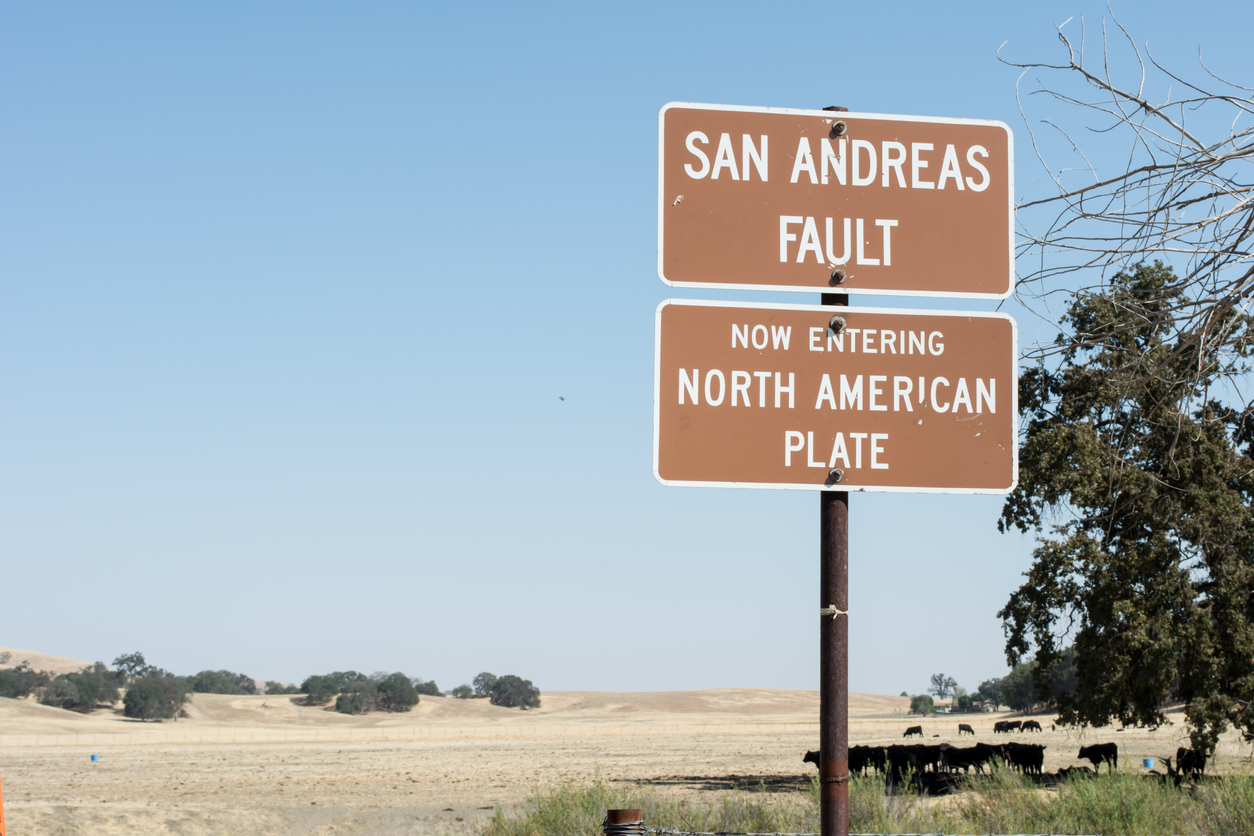Condominium Earthquake Insurance in California
If you own a condo in California, it’s a safe bet you are not covered against damage caused by an earthquake. Earthquake damage is typically an excluded peril under HO-6 and similar condo policies. Earthquake coverage is required to be offered, but only about 15% of condo owners choose to pay an additional premium to cover this peril despite reports1 that within the next 30 years, there is (1) over a 99% chance that one or more M6.7 or greater earthquakes will strike somewhere in California; (2) a 75% chance one or more M7.0 or greater earthquakes will strike Southern California; and (3) a 76% chance one or more M7.0 or greater earthquakes will strike Northern California.
Interested in learning more about how to insure your condo against earthquake damage? We wrote this guide to explain everything you need to know about earthquake insurance for condos in California, from the perspective of insurance attorneys.
Can You Get Earthquake Insurance for a Condo in California?
Yes, you can get earthquake insurance for a condo in California. Earthquake insurance policies for condos are most likely obtained through a residential insurance company (like State Farm, Farmers, or Nationwide) in collaboration with the California Earthquake Authority (CEA), the largest seller of residential earthquake insurance in the state.
If you are offered a policy it will likely be a CEA form (BEQ-6B) offered through a participating residential insurance company. But beware – a CEA policy does not simply add on earthquake coverage; it provides only limited coverage and likely operates differently than your primary “companion” condo policy. In fact, your companion policy, required to provide fire insurance for the property, must be issued by the same company issuing the CEA policy and must be in effect, or the CEA policy is void.
Is It Worth It To Get Earthquake Insurance for a Condo?
Several factors determine if it is worth it to get earthquake insurance for a condo, including your location, the age of your building, building materials used, value of the structure, policy deductible, and so on. As mentioned above, there is a 99% chance that an earthquake greater than a magnitude of 6.7 will strike somewhere in California in the next 30 years: Earthquake insurance can provide some protection.
Like any policy insuring against major environmental disasters like earthquakes, fire, floods, or hurricanes, make sure to research the exact terms of the policy and how it may vary from your companion condo policy. For starters, CEA condo policies provide for optional coverage groups that can be mixed and matched, each with its own deductible requirements depending on your selection. The deductible amount per coverage, expressed as a percentage of each coverage limit, must be met for each individual coverage. For instance, if your deductible for building property is $10,000 and your deductible for personal property is $5,000, you will not be paid for your personal property unless more than $5,000 of covered personal property was damaged despite building property damage of $50,000.
Who Pays for Earthquake Damage in a Condo?
Earthquake damage in a condo follows a split responsibility approach between the condo association’s insurance, the individual condo owner’s regular policy, and any additional insurance that may have been purchased by the individual owner.
The Condo Association’s Master Policy typically covers the building’s structure, roof, exterior walls, and common areas; the individual condo owner’s existing insurance policy covers their personal property. Additional CEA insurance purchased by the condo owner covers damage to major non-structural items like built-in appliances and wall-to-wall carpeting. It’s important to note, however, that condo associations do not always pay to include earthquake coverage. Check your individual association’s policies to determine your situation.
CEA insurance can also cover Loss of Use or Loss of Rents, in case the structure is uninhabitable. Finally, CEA insurance can cover Loss Assessments, when the condo association asks an individual owner to pay for commonly held properties like sidewalks, utilities, or other items that are outside the walls of the individual condo itself.
Coverages, Limits, and Provisions in a CEA Policy
Below are some of the coverages and limits provided and provisions to be aware of in a CEA policy:2
Coverage A – Building Property
In order to determine whether building property is covered under your CEA policy, two important documents must be reviewed:
- The association governing documents – to determine if you have an obligation to repair or maintain the property; and
- The association master policy – to determine whether it covers your property for the risk of earthquake
Two basic categories of building property are covered under a CEA condo policy. The first is property that is part of the structure and contained within the dwelling unit (such as built-in appliances, fixtures, alterations, and improvements), wall-to-wall interior carpeting, and real property that pertain exclusively to that unit (other than chimneys). The second category is only covered if the insured has an obligation under the governing documents to maintain the property and includes:
- plumbing pipes and utility services enclosed in the walls, ceiling, or floors
- equipment and utilities service structures outside the perimeter walls but within the common interest development
- chimneys up to $10,000.
CEA condo policies also provide an additional $1,500 for emergency services and an additional 5% for debris removal. Payments under this policy are limited by the insurable interest and whether benefits are available under an association master policy. You’ll notice below that the available limit options may not allow you to insure to value.
Available Limit Amounts: $25,000; $50,000; $75,000; $100,000
Policy Deductible Options: 5%; 10%; 15%; 20%; 25%
Coverage C – Personal Property
Adjustment under this coverage shares similarities with your companion [fire] policy. Recall, though, that the separate deductible applies. Further, and perhaps surprisingly, breakable items are excluded under this coverage. Breakable items include glassware, crystal, china, ceramic, pottery, and porcelain items for serving, as well as figurines, vessels, cases, and other ornamental items.
Available Limit Amounts: $5,000; $25,000
Policy Deductible Options: 5%; 10%; 15%; 20%; 25% with two exceptions:
If a home is valued at over $1 million dollars; and/or
If the home was built before 1980 on a raised or other* (non-slab) type foundation and is not verified to have been seismically retrofitted.
In both these cases, the lowest available deductible will be 15% (State law only requires that insurers offer a 15% deductible).
Coverage D – Loss of Use
CEA condo policies offer coverage for Loss of Use and Loss of Rents. In most CEA policies, your individual dwelling must be deemed “unfit to live in” for this coverage to be triggered. However, given the unique ownership nature of condos, Loss of Use benefits are also payable if the insured is forced to vacate their dwelling due to earthquake-related repairs to other units in the same development.
This coverage does not have a deductible.
Available Limit Amounts: $1,500; $10,000; $15,000; $25,000; $50,000; $75,000; $100,000
Coverage E – Loss Assessments
CEA Condo policies offer Loss Assessment coverage. A loss assessment is a demand by an association of owners requiring you to pay for damage to commonly owned property. Coverage E allows for payment up to the stated limit for earthquake-related damage, not otherwise excluded.
In some situations, the association of owners may elect not to repair the damaged property or may be prevented from repairing the property. The resulting reduction in fair market value may be covered if: (1) the dwelling unit is unfit to live in or cannot be legally occupied, and (2) the result of the reduction in value is not due to a loss not covered.
Available Limit Amounts: $25,000; $50,000; $75,000; $100,000
Building Code Upgrades
Building Code Upgrades coverage is provided as additional insurance if Coverage A – Building Property is purchased; $10,000 of coverage is provided. Under Coverage E, Building Code Upgrade coverage is also offered with a $10,000 sublimit.
Pros and Cons of Earthquake Insurance
There are pros and cons to earthquake insurance, mainly having to do with cost. Here are answers to some common questions about this kind of coverage.
What Are the Benefits of Earthquake Insurance?
The main benefits to earthquake insurance are preparedness and financial protection. While it is impossible to prevent an earthquake, insurance can help you be prepared in case you and your condo are affected.
Further, CEA insurance can cover some of the financial cost of repairing or replacing your belongings. In fact, most insurance policies do not include earthquakes. Without coverage, you may be 100% responsible. Some policies can also cover the cost of temporary housing if your condo is uninhabitable.
Finally, having CEA insurance can help you recover faster. You can submit a claim and get back on your feet sooner.
What Are the Disadvantages of Earthquake Insurance?
The main disadvantages to earthquake insurance are the high cost of premiums and potentially high deductibles. Both are based on several factors, including the geographical location of the condo, current earthquake risk, the age of the building, size, and so on. These also vary by insurer and policy, so make sure to review both the condo association’s policies as well as your own individual policy to get a better idea of the cost.
Ask Your Insurer for Coverage Against Earthquakes
If your condo is not currently insured against earthquakes, consider whether this coverage is right for you and, if so, ask your companion policy insurer what options are available. If you are already insured, it may be worthwhile to review your association’s master policy and the association governing documents to better inform your decision as to which coverages are needed and at what amounts. If you have difficulty adjusting an earthquake claim, contact an insurance professional to represent your interests for assistance.
Further Resources on Insurance Coverage Law
Navigating the complexities of insurance claims can feel overwhelming. Whether you’re facing unpaid claims or simply filing for the first time, our eBooks equip you with the crucial information you need to advocate for yourself with confidence.
- Filing A Property Insurance Claim
- Insurance Company Response Time
- What To Do When You Have a Denied/Underpaid Claim
- More Information on Hurricane Deductible and Policy Limits
- Condominium Hurricane Preparedness
Why Merlin?
Are you fighting an insurance company that won’t pay out on claims? With over 39 years of practice and $2 billion in recovered claims, our team stands by your side to ensure you can face any insurance challenge with confidence. Contact us today for a consultation, or read more about how we act as your trusted advocate.
1 Field, E.H., and 2014 Working Group on California Earthquake Probabilities, 2015, UCERF3: A new earthquake forecast for California’s complex fault system: U.S. Geological Survey 2015–3009, 6 p., available at: https://pubs.usgs.gov/fs/2015/3009/
2 You can find this information, and more, in the CEA 2021 Claim Manual found here: https://www.earthquakeauthority.com/sites/default/files/document/2021-claims-manual.pdf. Sample policies can also be found on the CEA Website: https://www.earthquakeauthority.com/




